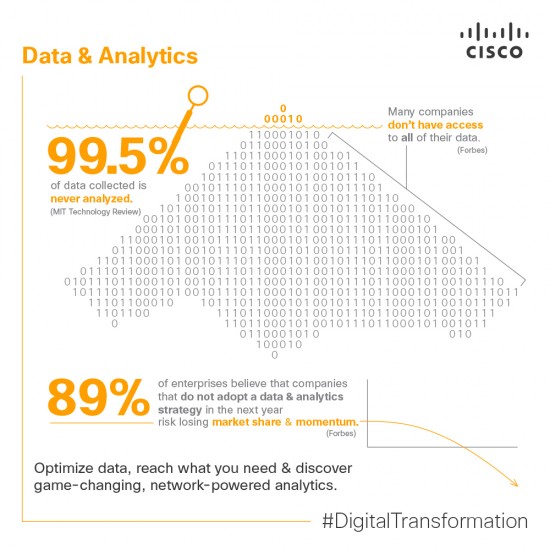The exciting trend of digital transformation has accelerated the demands on IT leaders to help their business counterparts get value out of data. The large majority of data companies collect is never analyzed. In the quest to find untapped efficiencies, achieve competitive differentiation, and accelerate innovation, companies need all of their data to work for them. The focus needs to be on a holistic, shared digital vision that brings together strategy, people, and processes. As organizations take new steps to becoming more analytically minded, the lines of communication between IT and Lines of Business often become dysfunctional. Recently at a client meeting, IT and business managers focused on analytics were introducing themselves to each other for the first time, in front of us. Throughout my years of helping organizations transform their businesses, I found some common barriers to progress. Below are some considerations – often overlooked – that I hope will help guide a productive conversation between IT and the Business:
-
Data and technology are just a part of the solution.
While data grows and technology advances, both organizational processes and talent struggle to keep pace. When companies commit to becoming data centric, the risk is to get blinded by the technology promises of data-driven insights that deliver business transformation. Businesses can’t transform with data and technology alone, it takes the right people and processes to make a successful transformation.
The most practical approach to becoming a data-driven company is to take the time necessary to focus on the exact business problem and to ask the right questions. Those include for example:
- What business (or customer) problem are we try to answer and why?
- What kind of information do we need exactly?
- Where does the data to get to that information reside and what are the gaps?
- Do we therefore need more data and if so, how will we get it?
Focus next on your organization’s internal data, then external data, then, what new skills are needed and how to acquire them (through people working for us, or with us?).
In particular, ask yourself:
- How will we prepare and manage the data so that we carve out the insights which are meaningful and actionable?
- Who will serve the roles of:
- data steward (someone in IT who is responsible for preparing and managing data, including content, metadata, and business rules)
- data scientist (someone who combines knowledge of math, statistics and analytics with user experience, industry savvy and business process change to create the right insights)
- decision scientist (someone who turns insights into decisions and helps the company turn them into actions).
According to PricewaterhouseCooper’s (PWC’s) 18th Annual Global CEO Survey, 48% of CEOs see data analytics as an investment priority and strategically ‘very important’ for their organization. Companies are focused on making fact-based decisions and with commitment to developing the right talent and processes, they will be headed in the right direction. As you undertake the data analytics journey, make your data a true company asset. Set up strong data integrity practices and data governance. And focus on the right data architecture. Embed data-driven insights into the organization’s decision making process and align incentives to do that.
https://www.youtube.com/watch?v=fxroi4beKhE
-
Traits, rather than skills.
Sift through your organization to find people with curiosity, creativity, and focus, as they are all critical in cultivating a sustainable data-driven culture. Computer programming and design skills can be taught, while curiosity, creativity and focus are inherent. Encourage an environment of experimentation and – most importantly – bring the data to life with a story. Tom Davenport wrote a Harvard Business Review article, 10 Kinds of Stories to Tell with Data, which offers method-based stories to help frame your story-telling approach.
-
Eat the Elephant, one byte at the time.
And finally, when driving the cultural shift re-imagine your business goals and desired outcomes, but start with small, iterative projects that will produce measurable results. Apply the 60/40 rule (60% ready is good to go) and adopt rapid prototyping. Showcase project successes and learn from best (and bad) practices to run the next project. As in all major innovations, achieving the final success takes time, careful planning and a phased approach.
What suggestions would you offer to leaders embarking on their analytics journey?

great informations.. I wait for further information regarding the progress of digital technology
Business leaders are always in demand of computing platforms which makes their task easy in defined time period to deliever the optimum performance. Thank you so much for describing the right facts.
Love it, it really is the way of the future and all businesses need to make the shift to digital, asap. We are working on this now for websites utilizing advanced analytics and AI, check out SmartR Site our cutting edge, analytics driven web platform that increases sales and improves the customer experience. Let me know what you think!